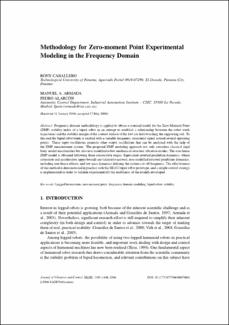Mostrar el registro sencillo del ítem
Methodology for Zero-moment Point Experimental Modeling in the Frequency Domain
| dc.contributor.author | Caballero, Rony | |
| dc.contributor.author | Armada, Manuel | |
| dc.contributor.author | Alarcón, Pedro | |
| dc.date.accessioned | 2017-07-31T17:02:40Z | |
| dc.date.accessioned | 2017-07-31T17:02:40Z | |
| dc.date.available | 2017-07-31T17:02:40Z | |
| dc.date.available | 2017-07-31T17:02:40Z | |
| dc.date.issued | 2006-06-28 | |
| dc.date.issued | 2006-06-28 | |
| dc.identifier.uri | http://ridda2.utp.ac.pa/handle/123456789/2378 | |
| dc.identifier.uri | http://ridda2.utp.ac.pa/handle/123456789/2378 | |
| dc.description | Frequency domain methodology is applied to obtain a nominal model for the Zero-Moment Point (ZMP) stability index of a biped robot in an attempt to establish a relationship between the robot trunk trajectories and the stability margin of the contact surface of the foot (or feet) touching the supporting soil. To this end the biped robot trunk is excited with a variable frequency sinusoidal signal around several operating points. These input oscillations generate other output oscillations that can be analyzed with the help of the ZMP measurement system. The proposed ZMP modeling approach not only considers classical rigid body model uncertainties but also non-modelled robot mechanical structure vibration modes. The non-linear ZMP model is obtained following three consecutive stages: Equivalent inverted pendulum dynamics, where saturation and acceleration upper bounds are taken into account, non-modelled inverted pendulum dynamics, including non-linear effects, and low-pass dynamics defining the system cut-off frequency. The effectiveness of this method is demonstrated in practice with the SILO2 biped robot prototype, and a simple control strategy is implemented in order to validate experimentally the usefulness of the models developed. | en_US |
| dc.description.abstract | Frequency domain methodology is applied to obtain a nominal model for the Zero-Moment Point (ZMP) stability index of a biped robot in an attempt to establish a relationship between the robot trunk trajectories and the stability margin of the contact surface of the foot (or feet) touching the supporting soil. To this end the biped robot trunk is excited with a variable frequency sinusoidal signal around several operating points. These input oscillations generate other output oscillations that can be analyzed with the help of the ZMP measurement system. The proposed ZMP modeling approach not only considers classical rigid body model uncertainties but also non-modelled robot mechanical structure vibration modes. The non-linear ZMP model is obtained following three consecutive stages: Equivalent inverted pendulum dynamics, where saturation and acceleration upper bounds are taken into account, non-modelled inverted pendulum dynamics, including non-linear effects, and low-pass dynamics defining the system cut-off frequency. The effectiveness of this method is demonstrated in practice with the SILO2 biped robot prototype, and a simple control strategy is implemented in order to validate experimentally the usefulness of the models developed. | en_US |
| dc.language | eng | |
| dc.language.iso | eng | en_US |
| dc.rights | https://creativecommons.org/licenses/by-nc-sa/4.0/ | |
| dc.rights | info:eu-repo/semantics/openAccess | |
| dc.subject | Legged locomotion | en_US |
| dc.subject | zero-moment point | en_US |
| dc.subject | frequency domain modeling | en_US |
| dc.subject | biped robot | en_US |
| dc.subject | stability | en_US |
| dc.subject | Legged locomotion | |
| dc.subject | zero-moment point | |
| dc.subject | frequency domain modeling | |
| dc.subject | biped robot | |
| dc.subject | stability | |
| dc.title | Methodology for Zero-moment Point Experimental Modeling in the Frequency Domain | en_US |
| dc.type | info:eu-repo/semantics/article | |
| dc.type | info:eu-repo/semantics/publishedVersion |
